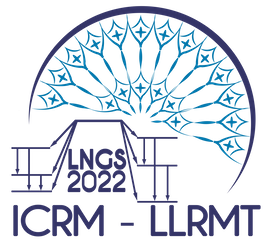Speaker
Description
The radioactivity monitoring for foodstuffs has been reinforced since the Fukushima daiichi NPP accident. The sample preparation procedures involving machining shall be required to homogenize radioactivity and fill a sample in the same type of container that is employed for the calibration. The conventional method, however, can be only used radioactivity monitoring by sampling surveys, even if no radioactive materials are detected, the samples cut up for measurement cannot be shipped. In such a situation a new type of device that is named as “Non-destructive radioactivity measurement device (hereinafter NDRMD)” has been developed to measure radioactive cesium in bagged whole samples without sample preparation technique so that all products can be inspected in advance of shipping. In the case of using such a device, it would be important to be determined the approximate detection efficiency for samples having various sizes and shapes with acceptable uncertainty from the information on the weight and type of the sample only, and also to take into account the variation of the detection efficiency due to the heterogeneity of radioactivity in each sample. However, such unexpectable uncertainties arising from these components might not be sufficiently clear to maintain reliability of inspection. In the present study, the uncertainties in the measurement of the radioactivity of whole foods using the NDRMD were determined by comparing the results of the measurement of food samples by the NDRMD with the results by the calibrated Ge detector using the conventional sample machining procedure. Two different models of NDRMDs that have a large (5”φ×5”) NaI detector or multiple small (2”φ×2”) NaI detectors were employed. In the present study, 36 samples of wild pine mushrooms and 29 of bamboo shoots cultivated Fukushima area were used. Each sample was measured four times by NDRMD, and the samples were shuffled before each measurement to check the reproducibility. After these measurements, individual activity concentrations of these specimens were determined by the conventional gamma-ray spectrometry technique with the sample preparation procedure. The relations between results obtained by each NDRMD and the Ge detector were analyzed by curve fitting with linear regression. As a result, the activity concentration obtained by NDRMDs were proportional to that obtained by the Ge detector, although the results obtained by NDRMDs were tended to be underestimated compared to the results obtained by the Ge detector. In addition, the prediction interval, which could reflect the variability due to counting statistics, reproducibility of placing the bagged sample, heterogeneity or radio-cesium in the sample in the individual values, were determined. The upper limits of prediction interval for 50 Bq/kg with a 95 % level of confidence were below 100 Bq/kg that was the guideline value for general foods in Japan for both pine mushrooms and bamboo shoots in the use of every device. These results represent that screening test of radiocerium in pine mushrooms and bamboo shoots is possible with 50 Bq/kg of screening level with a 95 % level of confidence, which is defined in ISO 19581, by the present three models of NDRMDs with the same measurement condition and procedure that were employed in the present study.

